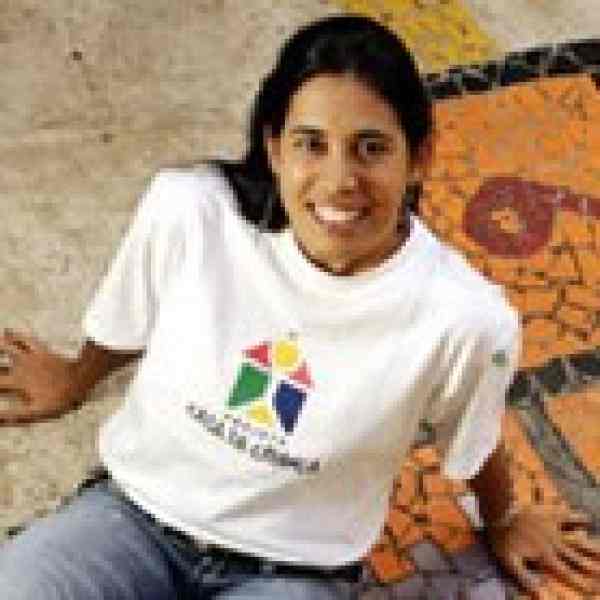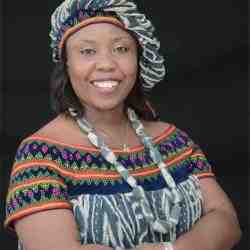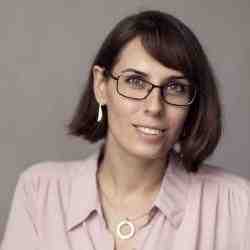Introduction
Architect Patrícia Chalaça Moreira is creating a new social commitment among architects, construction material suppliers, and the media. Her program Casa da Criança transforms state-run institutions for abandoned and adjudicated children into stimulating learning environments at no cost.
The New Idea
In Patrícia Chalaça Moreira's three-pronged method to transform state-run facilities for children, companies donate their materials, professionals volunteer their time, and media outlets promote social programming. Convinced that all children, be they wards of the state or students in elite private schools, have the right to the same high-quality facilities and services, Patrícia is teaching state-run institutions that their buildings should be educationally and socially stimulating environments. She created Casa da Criança (Children's House) to transform dilapidated government institutions for underprivileged children into dignified spaces that promote children's personal development.
The Problem
State-run institutions such as orphanages and minimum-security centers for adjudicated youth offer inadequate physical spaces for the children they serve. In addition to being dangerously run-down, the buildings resemble prisons: they are poorly lit, cramped, and generally depressing places for both children and staff. In Brazil, the federal funds allocated to institutions providing social assistance to children are insufficient to meet more than the children's basic needs, let alone create healthy environments for their personal growth and development. In this and other areas, the business sector is slowly becoming the source for a growing philanthropic culture. However, with the devaluation of the Brazilian currency in 1999 and recent instability in the country's economy, even profitable businesses are reluctant to contribute financially. Nongovernmental organizations with volunteer bases try to fill in the gap but often fail, because their goals are unclear or because tasks require expertise not found in ordinary citizens who want to help. With no way to tap into, channel, and manage volunteer talent, volunteer-based organizations often fail to deliver. Furthermore, volunteer burnout is a real issue. Busy professionals who wish to "give back to the community" want to see concrete accomplishments they can promote and be proud of.
The Strategy
Patrícia has incorporated the following elements into her plan: selection criteria for institutions, work plans for volunteers, well thought out solicitations to businesses, marketing and public relations tactics, and, in a particularly innovative stroke, personal long-term involvement between the donors and children of the target institution. The first step is choosing the institution to achieve maximum impact. First, it must serve over one hundred children or adolescents. Second, it must be located in an urban setting with high visibility. Third, the responsible government institution must be committed both to the renovation project and to improving services for the beneficiary children. Patrícia mobilizes architect volunteers and develops work plans with each one to keep participants on track. Each volunteer architect is in charge of designing one space–a bedroom, a nurse's office, a playground, or a storage area. The architect also supplies the team of workers who carry out the construction. The goal is to make the space efficient, low-maintenance, and as beautiful as possible–to stimulate the children's personal development and allow them to take pride in their surroundings. One designer transformed a hallway into an art gallery of children's work. A row of bathroom sinks became a "Brush-o-drome" with a space for the children to keep their toothbrushes. As an example of the change these environments can make, one "problem child" showed off how he learned to make his bed on the colorful top bunk. Another girl who used to pepper the walls with graffiti proudly pointed out a painting she had contributed to the "art gallery." Once the professional services are in place, Patrícia convinces private businesses to supply high-quality, durable materials. Each supplier has exclusivity in the project; that is, the institution will use only one type of lighting, one kind of ceramic tile, or one brand of paint. Thus, the donor claims ownership in the project and doesn't risk competition. The businesses also agree to maintain their donated materials throughout the life of the institution. Patrícia promotes the name of the architects and businesses in all publications for optimum media exposure. Suppliers are happy to have a showcase for their materials and to be associated with the best architects in town. Architects also receive substantial recognition through high-quality marketing tools and launch events that are designed to ensure publicity. In its first year (October 1999-November 2000), Casa da Criança renovated an orphanage, a government daycare, and a home for street children and at-risk adolescents. The organization helped a total of six hundred children, restored and redesigned 9,500 square meters, and utilized 6.6 million Brazilian reals ($3.3 million) worth of donated professional services and construction. This was all made possible through the involvement of more than 1,550 private companies, two hundred and sixty-four architects, one hundred and eighty-two construction workers in Recife, and the support of a construction workers' association. After completing the third project, Patrícia created a manual entitled The Casa da Criança Social Franchise. It outlines a set of criteria for new institutions and local coordinators. The coordinators are all architects with specific skills and experience in the social sector. Once selected, the architects participate in a training program on volunteer mobilization, media outreach, sponsorship, and management. Patrícia will expand the program to three cities each year. As part of the social franchising strategy, Casa da Criança's national coordinating body signs a contract with the architect who will serve as the "local coordinator trainee" during the first year of implementing the model. Once the program has completed the first restoration, the team of professionals working under the local coordinator then becomes a local coordinating body. To ensure the facilities' maintenance and provide support to the children's institutions after completing the renovation, Patrícia has developed "A Company of Angels" to keep volunteers committed to maintaining the buildings and the quality of the children's services. In each of the renovated buildings, the Angels will be responsible for implementing educational, health, sports, and leisure programs by forming partnerships with private companies that will commit to providing volunteer services in their area of work. The Angels' coordinating body will also conduct media outreach to promote recognition of the partner companies, create visibility for program activities, and hold fundraising events with private schools and banks to generate support for the institutions. Patrícia's goal is to spread her work within the next five years, bringing the Casa da Criança experience to children's hospitals and juvenile detention centers around the country.
The Person
Patrícia was born in 1970. Raised in an upper-middle class household in Recife, she learned English at the universities of Oxford and Cambridge and studied architecture in Brazil. She and her husband Marcelo, also an architect, married when they were both nineteen. Their daughter was born in 1995. Although their joint architectural firm was very successful, Patrícia realized that her privileged upbringing could provide an opportunity to give back to the community. She and Marcelo discussed opening a day-care center. In 1997, the couple was in a major car accident. Although Patrícia escaped with minor scrapes, Marcelo suffered serious injuries. Luckily, their daughter was not with them. The event changed their lives, and since then, Patrícia has dedicated herself to using her professional experience and personal skills to pursuing social change, as she did with Casa da Criança. Since its inception in 1999, Patrícia has relentlessly consolidated and expanded the program. Her pace has not slowed, even with the birth of her second child.




